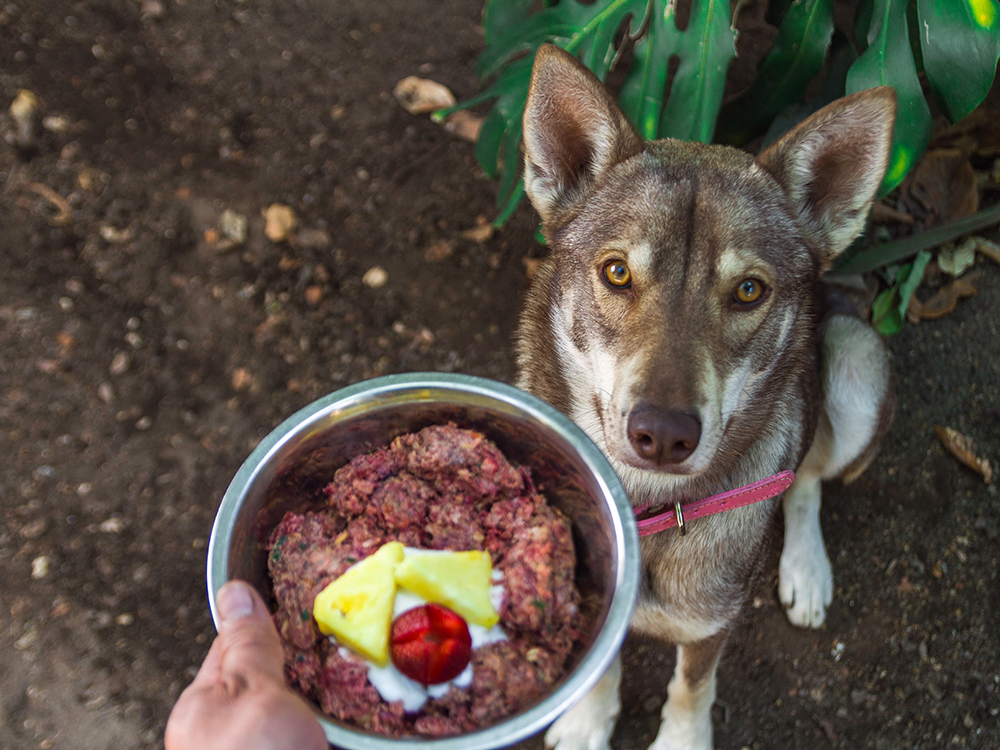Top 9 Best Raw Foods for Dogs: Boost Health with Beef, Chicken, Duck & More
Thinking about switching your dog’s diet to raw food? You’re not alone. Many pet owners believe that raw food provides a more natural and nutritious option compared to traditional kibble. But with so many choices out there, it can be overwhelming to decide what’s best for your furry friend.
In this article, we’ll explore the nine best raw food options for dogs, ensuring your pup gets the nutrients they need to thrive. From protein-packed meats to wholesome vegetables, these selections will keep your dog healthy and happy. Ready to dive in? Let’s uncover the top picks for your canine companion.
Understanding Raw Food Types
When switching your dog’s diet to raw food, it’s crucial to understand the different types available. Here’s a closer look at two main categories: commercially prepared raw foods and home-prepared raw meals.
Commercially Prepared Raw Foods
Commercially prepared raw foods offer convenience and balanced nutrition. These typically come pre-packaged in various forms such as patties, nuggets, or chubs, making them easy to serve. Brands like Stella & Chewy’s and Primal Pet Foods provide complete and balanced diets formulated by experts to meet your dog’s nutritional needs. Quality assurance is usually high, as many companies follow stringent safety protocols, ensuring the food is pathogen-free. This option is perfect if you want to save time while ensuring your dog gets all essential nutrients.
Home-prepared Raw Meals
Home-prepared raw meals give you full control over your dog’s diet, allowing you to select specific ingredients. Common components include fresh meats (e.g., chicken, beef, turkey), organ meats, fruits, vegetables, and supplements. You can cater to your dog’s unique dietary needs or allergies by varying the ingredients. However, this method requires a good understanding of canine nutrition to ensure a balanced diet. Consulting with a vet or pet nutritionist is advisable to avoid deficiencies or excesses. Though more time-consuming, this option can be highly rewarding if you prefer a customized feeding approach.
Beef: A Nutrient-Rich Choice
Beef is a popular raw food option for dogs, packed with essential nutrients and rich in protein, iron, and vitamins. It’s a great way to provide your furry friend with a well-rounded diet.
Benefits of Feeding Beef to Dogs
Enhances Muscle Development. Beef is high in protein, which helps build and maintain lean muscle mass in dogs.
Boosts Energy Levels. The vitamins B12 and B6 in beef play a key role in energy production and overall metabolism.
Supports Immune Function. Rich in zinc, beef helps boost your dog’s immune system and promotes overall health.
Improves Skin and Coat Health. The omega-3 and omega-6 fatty acids found in beef contribute to healthier skin and shinier coats.
How to Prepare and Serve Beef
Choose Fresh or Frozen Cuts. Opt for high-quality, human-grade beef to ensure your dog consumes the best nutrients.
Trim Excess Fat. Remove extra fat to keep your dog’s diet balanced and to prevent digestive issues.
Serve Raw or Lightly Cooked. While many prefer raw beef, you can lightly cook it to reduce potential bacteria if your vet advises.
Mix with Vegetables. Combine beef with dog-safe vegetables like carrots or spinach for added nutrients.
Portion Appropriately. Consult with your vet to determine the right portion size based on your dog’s size, age, and activity level.
Chicken: Easily Digestible Protein
Chicken is a versatile and easily digestible source of protein for your dog’s raw diet.
Advantages of Chicken in a Raw Diet
Boosts muscle growth with high protein content. Packed with essential amino acids, chicken supports lean muscle development and overall growth, making it ideal for puppies and active dogs.
Enhances skin and coat health. The naturally occurring fats in chicken, including omega-6 fatty acids, contribute to a shiny coat and healthy skin.
Offers essential vitamins and minerals. Chicken is rich in B vitamins, including B6 and niacin, which aid in metabolism and promote energy production. It also provides zinc and phosphorus for bone health and immune function.
Preparing Chicken Safely for Dogs
Choose high-quality cuts. Opt for chicken breasts, thighs, or drumsticks from reliable sources to ensure freshness and safety.
Avoid seasoning and additives. Keep chicken plain without garlic, onions, or other seasonings that can be harmful to dogs.
Handle with care. Always wash your hands and utensils thoroughly after handling raw chicken to prevent cross-contamination.
Portion appropriately. Cut chicken into bite-sized pieces suitable for your dog’s size to make chewing and digestion easier.
Freeze before serving. Freezing chicken for at least 3 days can reduce the risk of harmful bacteria, making it safer for your dog to consume.
Turkey: Low-Fat Protein Source
Why Choose Turkey for Your Dog
Turkey offers a lean, low-fat protein that’s perfect for maintaining your dog’s muscle mass without adding unnecessary calories. It’s rich in essential nutrients like zinc, phosphorus, and selenium, which support your dog’s immune system and overall health. Turkey is also easier to digest compared to fattier meats, making it an excellent choice for dogs with sensitive stomachs or specific dietary needs.
- Select Fresh Cuts: Purchase high-quality, fresh turkey cuts such as breast meat, which is leaner than other parts.
- Avoid Seasonings: Do not use any salt, spices, or flavorings when preparing turkey for your dog. Plain turkey is best.
- Cook It Thoroughly: Ensure the turkey is fully cooked to kill any harmful bacteria. Avoid giving your dog raw turkey unless you are certain of its quality and source.
- Portion Control: Give turkey in moderation. The amount should correspond with your dog’s size and activity level.
- Freeze Before Serving: Freeze turkey pieces for a few days before serving to eliminate potential parasites. Thaw completely before feeding your dog.
Turkey is a versatile and nutritious option you can include in your dog’s raw or cooked diet.
Lamb: High-Quality Protein Variety
Nutritional Benefits of Lamb
Lamb offers a unique protein source for your dog’s diet. It’s rich in essential amino acids, which support muscle repair and growth. The high levels of zinc and iron in lamb promote a healthy immune system and red blood cell production. Omega-3 fatty acids in lamb aid in maintaining your dog’s skin and coat health. Additionally, lamb is less likely to cause allergies, making it ideal for dogs with sensitivities to more common proteins.
Best Practices for Lamb Preparation
Choose fresh, high-quality cuts of lamb, such as shoulder or leg, to ensure your dog gets the best nutrients. Trim excess fat to prevent digestive issues. Avoid adding seasonings or marinades, as they can be harmful to your pet. Freeze the lamb for at least 3 days before serving to kill any potential parasites. Serve lamb in appropriate portion sizes based on your dog’s weight and activity level.
Fish: Essential Fatty Acids Provider
Including fish in your dog’s diet provides a rich source of essential fatty acids, promoting overall health.
Types of Fish to Include
- Salmon: Packed with omega-3 fatty acids, supporting joint health and a shiny coat. Always use wild-caught salmon to avoid contaminants.
- Sardines: Small, nutrient-dense, and low in mercury. They’re rich in omega-3 fatty acids and offer a crunchy treat.
- Mackerel: Provides a significant amount of vitamin D and omega-3s. Ensure they are boneless to prevent choking hazards.
- Herring: Loaded with essential fatty acids, vitamin D, and vitamin B12. Use it as a fresh or frozen option.
- Avoid Raw Salmon from the Pacific Northwest: It may carry a parasite that’s harmful to dogs. Always cook or freeze first to ensure safety.
- Check for Bones: Remove any small bones to prevent choking and internal injuries.
- Moderate Intake: Excessive fish consumption can lead to vitamin B deficiency. Maintain balance by rotating with other proteins.
- Monitor Mercury Levels: Choose smaller fish like sardines to reduce mercury exposure, ensuring long-term health.
Including these types of fish while following these precautions will help ensure your dog’s diet is both nutritious and safe.
Rabbit: Novel Protein Option
Rabbit meat is an excellent choice for dogs with food sensitivities or allergies. It’s a lean, high-protein option that’s easily digestible and packed with nutrients.
Health Benefits of Rabbit Meat
Rabbit meat offers numerous health benefits for your dog. It’s low in fat and high in protein, making it perfect for maintaining lean muscle mass. Rich in vitamins B12 and E, it supports energy production and a healthy immune system. Additionally, rabbit is a good source of essential minerals like phosphorus, potassium, and zinc, which are vital for bone health, muscle function, and overall well-being.
How to Incorporate Rabbit in Raw Diets
Introducing rabbit into your dog’s raw diet is simple. Start by offering small portions to ensure your dog accepts the new protein without any adverse reactions. You can combine rabbit meat with other raw foods like organ meats and vegetables to create a balanced meal. If sourcing fresh rabbit meat is challenging, consider pre-packaged raw rabbit meals available from reputable pet food suppliers. Always ensure the rabbit meat is of high quality and free from harmful additives or contaminants.
Duck: Rich in Iron and Other Minerals
Duck is a fantastic addition to your dog’s raw food diet. It’s packed with essential nutrients, making it a highly nutritious choice.
Reasons to Feed Your Dog Duck
Boosts Iron Levels: Duck is rich in iron, which is essential for red blood cell production. This helps in preventing anemia and maintaining energy levels.
Supports Muscle Health: The protein content in duck supports muscle development and maintenance. It’s great for active and growing dogs.
Provides Key Minerals: Duck offers minerals like zinc and selenium. These contribute to a healthy immune system and promote cell function.
Improves Skin and Coat: The natural fats in duck, such as omega-6 fatty acids, keep your dog’s skin healthy and coat shiny.
Aids in Allergy Relief: Duck is often considered a novel protein, making it suitable for dogs with food sensitivities or allergies.
Safe Handling and Preparation of Duck
Thaw Properly: Ensure you thaw duck in the refrigerator to prevent bacterial growth. Never leave it on the counter to thaw.
Handle With Care: Use separate cutting boards and utensils for raw duck to avoid cross-contamination with other foods.
Portion Appropriately: Cut duck into manageable portions based on your dog’s size. This ensures they can chew and digest it properly.
Store Correctly: Keep unused portions in airtight containers in the refrigerator. Use within 2-3 days or freeze for longer storage.
Observe Your Dog: Monitor your dog after introducing duck to ensure they don’t have any adverse reactions. Start with small amounts and gradually increase.
By following these tips, you can safely and effectively incorporate duck into your dog’s raw food diet, providing them with valuable nutrition and health benefits.
Conclusion: Implementing the Best Raw Foods
Choosing the right raw foods for your dog’s diet can significantly enhance their health and well-being. Incorporating a variety of meats like beef chicken turkey lamb fish rabbit and duck ensures they receive a balanced mix of nutrients essential for muscle development energy and overall vitality.
Always handle and prepare raw foods with care to prevent contamination and ensure your dog’s safety. Monitor their reactions closely when introducing new proteins especially duck to identify any potential allergies.
By thoughtfully selecting and preparing these raw foods you can provide your dog with a nutritious diet that supports their health and happiness.






